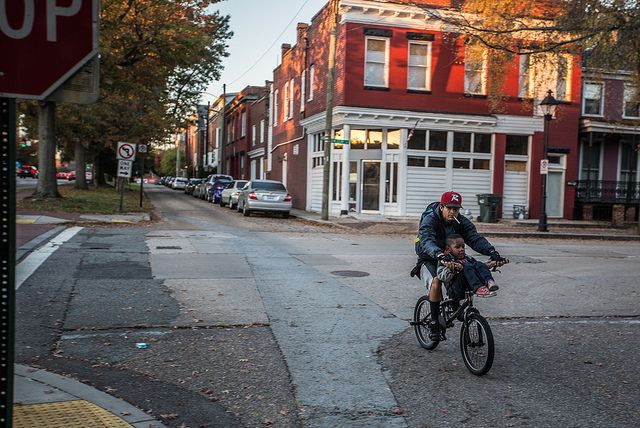Antisocial Behavior Higher For Low-Income Boys Living Beside Wealthier Neighbors

British policy has long supported mixed-income neighborhoods, believed to be helpful for struggling families and more socially equitable. However, a new study of these neighborhoods overturns such egalitarian ideas. Boys from low-income families fare worse, not better, growing up beside wealthier neighbors, say Duke University researchers, the effects worsening as the economic gap between the boys and their peers widens.
“It is quite possible that the relationships are different in the United States,” Dr. Candice Odgers, associate director of the Duke Center for Child and Family Policy, told Medical Daily. “The big difference is you don’t actually have the opportunity, a similar opportunity, to study these things in the U.S. because poverty is still highly concentrated. So it’s relatively rare to find low-income children living among the most affluent, these more affluent peers.” Soon, though, that may no longer be true; emerging policy trends support the creation of mixed-income neighborhoods in the U.S.
To conduct the study, Odgers and her colleagues followed 1,600 children in urban and suburban areas of England and Wales from birth to age 12. She and her team performed intensive home assessments, spoke to both teachers and neighbors, and gathered additional data from other sources, including census reports. Strikingly, Google Street View aided the team in their surveys of neighborhood conditions; this 21st century technique revealed the presence of parks, quantity of graffiti, property maintenance, and other details.
So what did the researchers discover?
Antisocial behavior among the low-income boys grew in economically mixed settings: the boys lied, cheated, swore, and fought more. In fact, their bad behavior worsened as surrounding conditions grew rosier — antisocial acts increased in middle-income neighborhoods, and grew worse in the wealthiest neighborhoods. These findings held true between the ages 5 through 12.
“Yes, it was a very thorough study,” Odgers told Medical Daily. “But of course it’s associational, we cannot claim causation. We cannot say that economically mixed communities cause anti-social behavior.”
Strikingly, the low-income boys living in hard-pressed neighborhoods — where three-quarters of the community or more could be considered poor — showed the least amount of antisocial behavior. One other significant result of the study suggests environment has no effect on girls; an affluent setting did not negatively influence the behavior of the low-income girls.
Higher Income Boys
Notably, Odgers' study did not exclude observations about children at the other end of the economic spectrum; the authors also gathered data on working class, middle class, and more affluent children. Sadly, they fared worse when they grew up alongside poverty. As their neighborhoods grew more impoverished, their antisocial behavior increased.
What’s next for Odgers? She and her team will focus on education. “How are these children doing in terms of their early reading, their school achievement, and where they end up as adults,” she told Medical Daily.
Source: Odgers CL, Donley S, Caspi A, et al. Living alongside more affluent neighbours predicts greater involvement in antisocial behavior among low-income boys. Journal of Child Psychology and Psychiatry. 2015.
Published by Medicaldaily.com



























